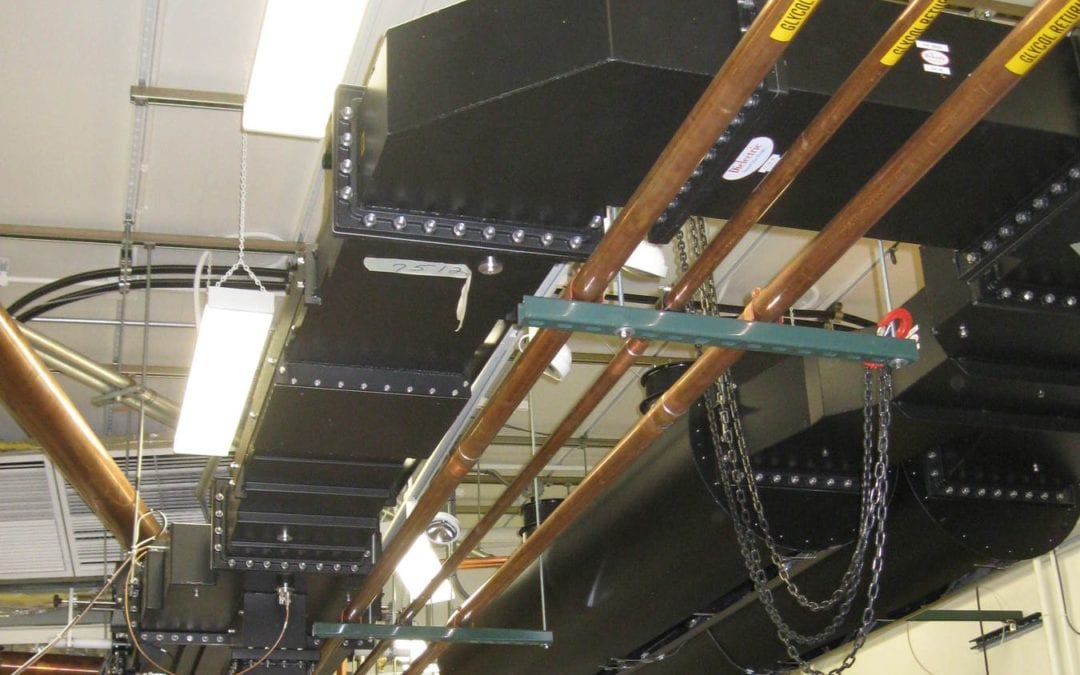“RF System Considerations for ATSC Change” guide checks the boxes for an optimized ATSC3.0 transition.
RAYMOND, Maine, June 9, 2020 — With NextGen TV’s adoption accelerating, Dielectric has prepared a transition plan for broadcasters that checks every critical box. While Dielectric expects that many broadcasters will have most critical components in place — notably stations that upgraded RF systems during repack — the transition requires a thorough evaluation of RF systems to ensure readiness for all that the ATSC 3.0 standard offers.
As Sales Manager Cory Edwards recalls, one of the greatest technical challenges of the DTV transition was establishing proper signal correction within the exciter to meet the “shoulders” of the FCC Mask. Transmitter and RF suppliers developed eight-pole filters to help solve the problem, and there are a significant number still in service today. However, the ATSC 3.0 standard is significantly different from ATSC 1.0, and what worked for one standard may not apply to what’s ahead.
“The eight-pole filter does not allow utilization of the full bandwidth required for NextGen TV services, which includes options for 4K video, mobile device reception and Internet-connected OTT devices,” said Edwards. “There is a tendency to believe that the RF filter and associated components will work just the same for NexGen TV if remaining on the same channel. The reality is that’s not always true.”
The chief advantage of the ATSC 3.0 standard, as Edwards explains, is the OFDM platform which uses multiple carriers to support new multimedia services. Where ATSC 1.0 used approximately 5.38MHz of the allocated channel, ATSC 3.0 will use up to 5.83MHz – a bandwidth measurement that six-pole filters will readily accommodate.
“The difference is substantial enough for older eight-pole filters to require a reduction in the maximum number of carriers, thus reducing channel capacity – and potential revenue recognition opportunities – which defeats the purpose of adopting NextGen TV,” said Edwards. “Filter replacement will retain full-channel data capacity, which is critical for potential NextGen TV revenue streams.”
Dielectric’s “RF System Considerations for ATSC Change” checklist addresses the two major consequences of transitioning to NextGen TV: The increase in occupied bandwidth as explained above, and the increase in peak power. Similar to the bandwidth challenge, older filter designs (including eight-pole models) did not anticipate the higher peak levels of the ATSC 3.0 standard. Transitioning to a modern high-efficiency filter will provide ample peak power headroom to support NextGen TV transmissions.
The complete checklist for Dielectric customers covers the following:
- Peak Power Capability of all components, including safety factors for filters and coaxial/waveguide switches
- Bandwidth of Channel Filters
- Removal or Replacement of old RF equipment, along with a cost comparison for upgraded systems
- RF System Service, including sweeps performed by Dielectric engineers to improve overall VSWR performance
- Compatibility of Components, including acceptable filtering levels and presence of appropriate interlock and RF monitoring points
Dielectric offers the whitepaper checklist to any broadcaster, and it is available on the technical resources page of its website. The company will also work closely with leading transmitter suppliers to ensure that broadcasters have all bases covered from the initial planning stage.
“Every transmitter vendor has a unique product design, and we consistently build RF systems to suit each system,” said Edwards. “While the filter is the main concern to support a clean ATSC 3.0 transition, we will work with transmitter vendors and broadcasters to ensure that their elbows, switches, transmission line and other RF systems inside the shelter are primed and ready for NextGen TV performance.”
About Dielectric
Based in Raymond, Maine, Dielectric LLC is a wholly owned subsidiary of Sinclair Broadcast Group. Dielectric is a leading provider of innovative broadcast products. Now celebrating its 77th year of operation, the company builds and delivers antennas and RF systems optimized for every TV and FM radio broadcast need since 1942. Dielectric is an innovative, customer-centric organization with a long history of engineering excellence in designing and manufacturing high-quality broadcast solutions. As a trust partner of broadcasters worldwide, Dielectric maintains its legacy of advanced, precision RF solutions while building in features that prepare broadcasters for the future. More information can be accessed at www.dielectric.com
# # #


